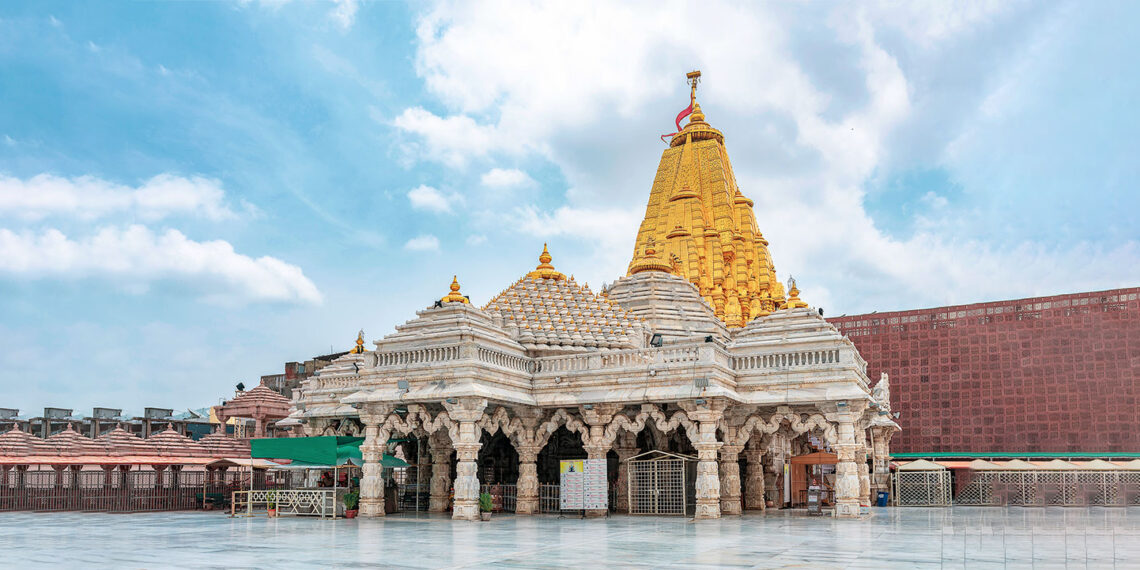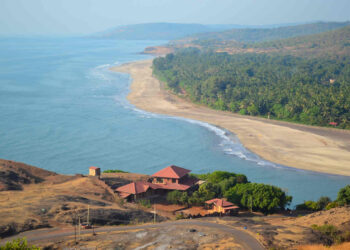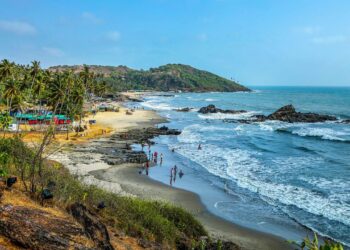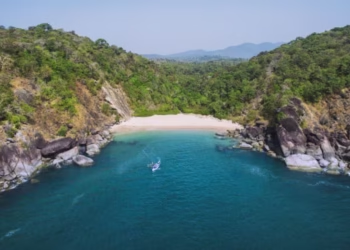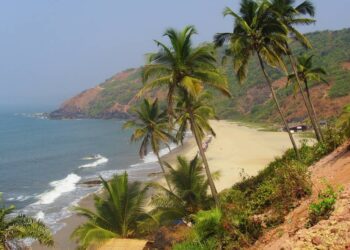Tucked away in the Aravalli hills of Banaskantha, Gujarat, the Ambaji Temple is a holy place where people come to pray to Goddess Amba, a divine goddess who has been worshiped since the pre-vedic period. She is often referred to as Arasuri Amba, named for the location of the temple in the Arasur hills. Built long back, around the 7th century, by Nagar Brahmins, this temple, with its white marble walls and golden spire, calls to those seeking blessings.
Fun Fact: There’s no statue in the temple; devotees worship a gold-plated Yantra, kept hidden from plain view.
Mythological Importance
Ambaji Temple has old tales. One story says Goddess Sati’s heart fell here when Lord Shiva carried her in sorrow, making it one of 51 Shakti Peethas. Another tale tells of Lord Rama praying to Amba on nearby Gabbar Hill to get strength to defeat Ravana. Some say an Adivasi found the Yantra while plowing his field, and his prayers brought him good fortune. Locals think praying here cleans sins and gives strength. As a big Shakti Peetha, it’s tied to Amba’s great power, worshipped by those who follow Shaktism.
Historical Overview
The temple’s roots go way back, maybe before Vedic times, but the building we see now started around the 7th century with Nagar Brahmins. Ambaji was a holy place even earlier, with Shakti worship. A stone from 1584 shows fixes were done, and a copper plate from 1762 talks about repairs by Tintoi’s Thakor. Raiders hurt it in the 13th century, but Idar kings built it back up. By the 1800s, Jains looked after it for a bit, but Vaishnava traders fixed it again. In 1963, the Shri Arasuri Ambaji Mata Devasthan Trust took over. Work in 1975 kept its old look. Gujarat’s singers long ago told of Amba’s glory, making it known. Now, many come to Banaskantha’s hills to see it.
The temple’s past runs deep. Finds from the 6th century, like old idols, show how old it is. Notes from the 1800s call it fine. Ruins near Ambaji point to a town from long ago.
Architecture of Ambaji Temple
Ambaji Temple sits on 8 acres by where the Saraswati River starts, built in an old Gujarat style. The main part, from the 7th century, has a 103-foot spire topped with gold, holding 381 golden pots. Its white marble walls have carvings of Amba on her lion, Vishnu, and bits from the Ramayana. Inside, there’s no idol, just a gold-plated Shri Visa Yantra, a holy design with 51 sacred letters, worshipped by priests who don’t look at it. Silver doors guard the inner room.The inner sanctum of the temple has silver-plated doors. There is a gokh, or niche, in the wall on which is fixed an old-plated marble inscription of the Viso Yantra, a Vedic text on sacred geometry, which is the main focus of worship.
There’s a dance hall with 20 marble pillars, carved with dancers and gods. Smaller shrines for Varahi Mata, Ambikeshwar Mahadev, and Ganesha are in Chachar Chowk, a square for fire rituals. The Varahi shrine shows her with a boar face, for might. The Mahadev shrine has a lingam, for safety. The Ganesha shrine shows him sitting, for smarts. The grounds, with marble paths, feel holy, set in the hills. A pool, Mansarovar, with steps, is for holy dips. Pillars tell Amba’s stories, showing the way for devotees. A red flag flies high, calling all.
Rituals and Festivals
The ecstatic festival of Navratri is celebrated all over Gujarat in reverence of Ambaji, by dancing garba around the Holy Mother. On these nine nights the Nayak and Bhojok communities also perform bhavai theater. Bhadarvi Purnima, in September, has a big fair with folks walking from far off. Diwali, in October or November, lights up with lamps. Kartik Purnima, in November, brings Bhil tribal dances. Janmashtami, in August, sings of Krishna’s birth. Navratri’s garba makes Chachar Chowk bright. Mansarovar, said to wash sins, sees many devotees bathing during festivals.
Information for Travelers
Hours and Entry: Open every day, 7:00 AM to 11:30 AM, 12:30 PM to 4:30 PM, 6:30 PM to 9:00 PM. It’s free to go in, but prayers cost ₹100-400. No pictures in the inner room.
Clothing: Wear clothes that cover shoulders and knees. Women for prayers wear sarees or suits, men wear kurtas.
How to Get There:
Air: Ahmedabad Airport, 179 km away, is closest. Taxis take 3.5 hours, cost ₹3000-4000.
Train: Palanpur Station, 65 km off, links to Ahmedabad (2 hours). Autos cost ₹500-700.
Road: Buses from Ahmedabad (3 hours) or Mount Abu (1 hour) come to Ambaji. Taxis cost ₹1500-2000. It’s near the big road.
Places to Stay: Ambaji has guesthouses like Hotel Mangal Murti (₹1000-2000). Lords Eco Inn (₹2000-3000) is comfy. Stalls sell dhokla, khaman, and tea.
Best Time to Visit: October to March is cool, 20-30°C. Weekdays are calm. Navratri and Bhadarvi Purnima are packed, so plan early.
Nearby Attractions:
Gabbar Hill, 5 km away, is Amba’s first seat, with 999 steps or a ropeway.
Mansarovar Kund, 1 km away, is a holy bath spot.
Koteshwar Mahadev Temple, 8 km away, is a Shiva shrine.
Mangalya Van, 1 km away, has a star garden.
Balaram Ambaji Wildlife Sanctuary, 20 km away, has animals.
Final Thoughts
Ambaji Temple in Banaskantha, Gujarat, a holy spot in western India, is a treasure for the soul. Goddess Amba’s mighty touch reaches all who visit, making it a place you must see among India’s sacred sites.
